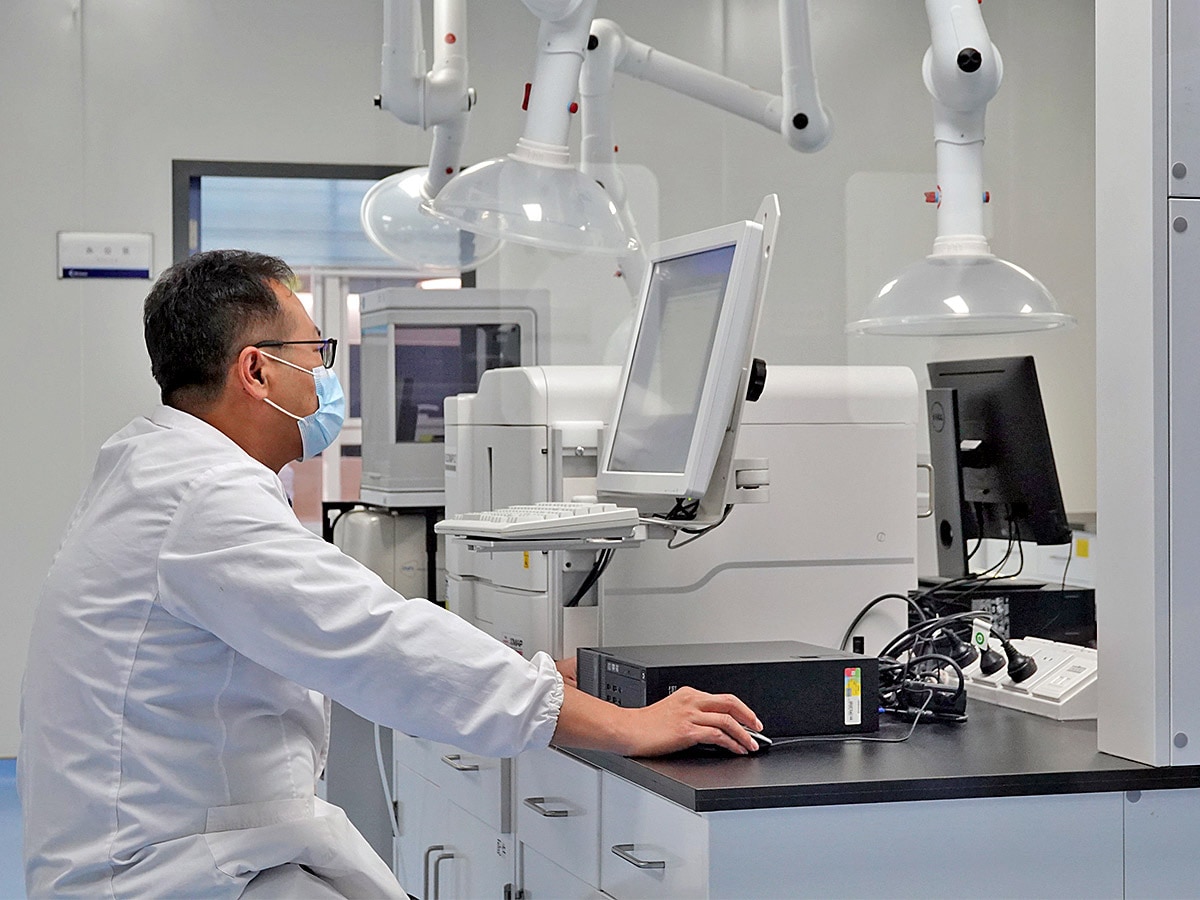The Bioventix share price has had a volatile year. Despite peaking at 4,000p back in May, the stock finds itself down this year as waning investor confidence has seen the value of global markets deplete. Bioventix shareholders will be hoping that its upcoming results on Monday 24 October can provide the business with a boost.
Shares in biotechnology company Bioventix [BVXP.L] have struggled to build back the momentum it saw during the coronavirus pandemic, however, the company is confident that its fiscal year 2022 results will be ahead of market expectations.
Bioventix, which specialises in the creation and supply of high-affinity sheep monoclonal antibodies (SMAs), offers clients high-quality SMAs that can be used in immunodiagnostics labs for the research and treatment of heart disease, cancer, fertility, thyroid function and drug abuse.
The business has seen its growth hampered in recent times as the coronavirus pandemic halted its operations. However, a recent update from September reveals that Bioventix has seen an improvement in its performance.
Shares in the company have declined by 0.7% year-to-date to close at 3,347.22p on 17 October, which is a 16.9% fall from its 52-week high of 4,000p seen one year ago on 19 October 2021.
Full-year earnings forecast to outperform
Bioventix’s latest interim report for the six months to 31 December 2021, released on 28 March, highlighted the ongoing impacts of the coronavirus pandemic. Revenues for the half-year fell from £5.16m in 2020 to £4.73m during the period.
The company said that the pandemic had still affected the reporting period, impacting “activity within diagnostic pathways in hospitals and clinics around the world”. On top of this, total profits before tax were down 4% at £3.56m. Bioventix’s cash balance as of 31 December 2021 had also fallen from £5.8m to £5.1m.
Despite the challenges that it posed, the group continued with the development of the Tau biomarker, which has potential in the diagnosis of neuropathological diseases such as Alzheimer’s. The business also announced an interim dividend of 52p per share in the update, a 20% increase on the interim dividend paid the year prior.
More recently, last month the business released a trading update in which it stated that its full-year results are “likely to be significantly ahead of market expectations.” The notice pinned this to recovery from challenges presented by the pandemic, the successful roll-out of its troponin products, and “favourable exchange rates” with approximately 50% of its revenues linked to US Dollars.
Cash reserves robust to grow dividends
For investors, the main attraction to Bioventix stock is its defensive nature. With many of its products deemed essential regardless of economic conditions, this has contributed to the stock falling a mere 0.7% in 2022.
Another attractive feature of the stock is its growing dividend payments. At its last close, the stock offered a 2.87% dividend yield. And with over £5m in cash reserves, the business is in a healthy position to increase dividends in the future, as highlighted by the latest hike.
Despite this, the stock currently has a price-to-earnings ratio of 26.31, which may signify that the Bioventix share price is expensive. The business will likely see the cost of supplies rise in the months ahead as red-hot inflation continues to burn industry, which could have major implications for Bioventix’s bottom line as we head toward 2023.
Analysts don’t seem worried about the stock, but they don’t seem particularly interested, either. The one analyst offering a 12-month price target to the Financial Times gave a target price of 4,300p, representing a 29.3% upside to its last close price. The same analyst also expects full-year dividend payment to be 126p, signifying a 11.89% decrease from 2021.
Disclaimer Past performance is not a reliable indicator of future results.
CMC Markets is an execution-only service provider. The material (whether or not it states any opinions) is for general information purposes only, and does not take into account your personal circumstances or objectives. Nothing in this material is (or should be considered to be) financial, investment or other advice on which reliance should be placed. No opinion given in the material constitutes a recommendation by CMC Markets or the author that any particular investment, security, transaction or investment strategy is suitable for any specific person.
The material has not been prepared in accordance with legal requirements designed to promote the independence of investment research. Although we are not specifically prevented from dealing before providing this material, we do not seek to take advantage of the material prior to its dissemination.
CMC Markets does not endorse or offer opinion on the trading strategies used by the author. Their trading strategies do not guarantee any return and CMC Markets shall not be held responsible for any loss that you may incur, either directly or indirectly, arising from any investment based on any information contained herein.
*Tax treatment depends on individual circumstances and can change or may differ in a jurisdiction other than the UK.
Continue reading for FREE
- Includes free newsletter updates, unsubscribe anytime. Privacy policy





